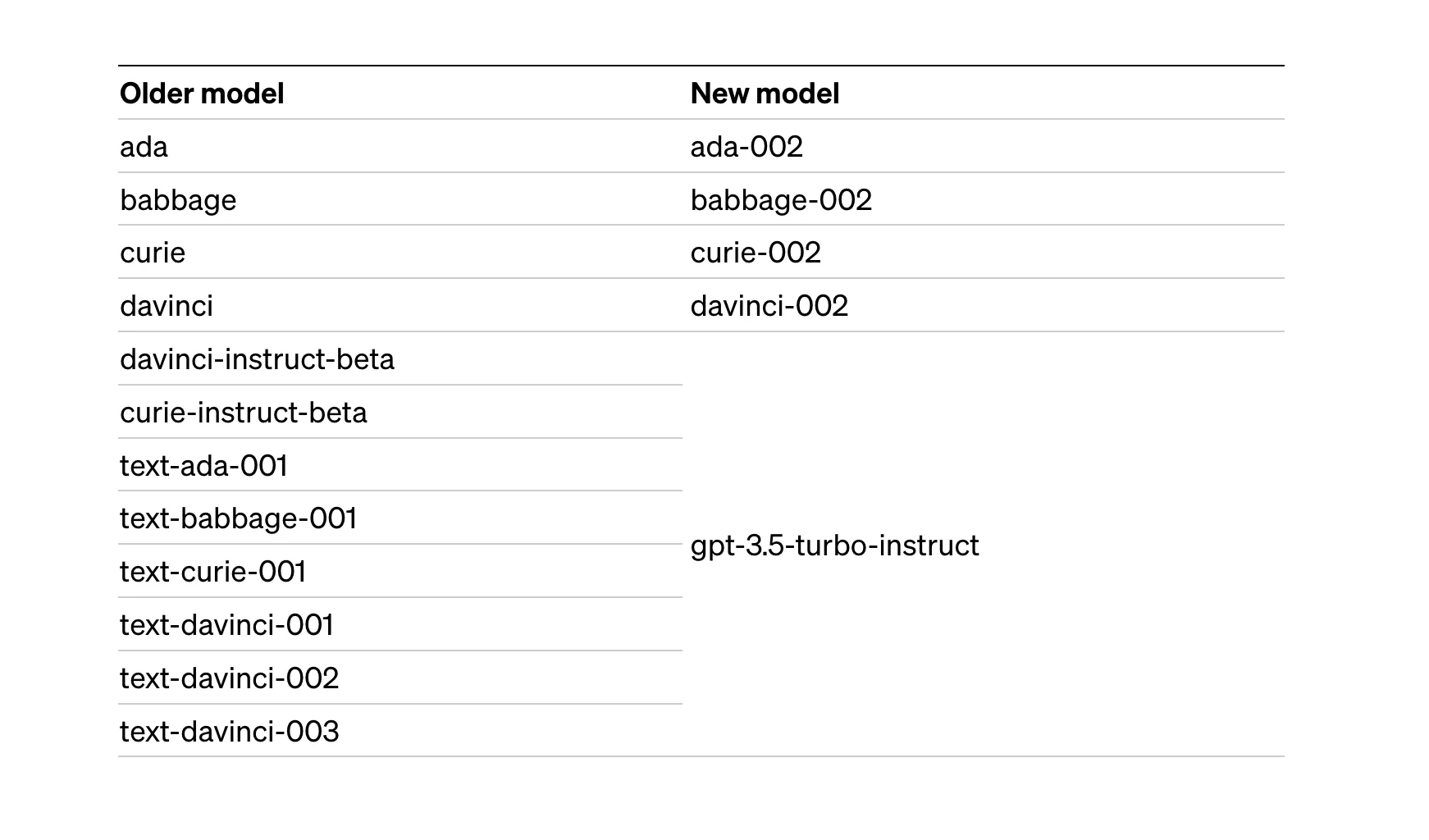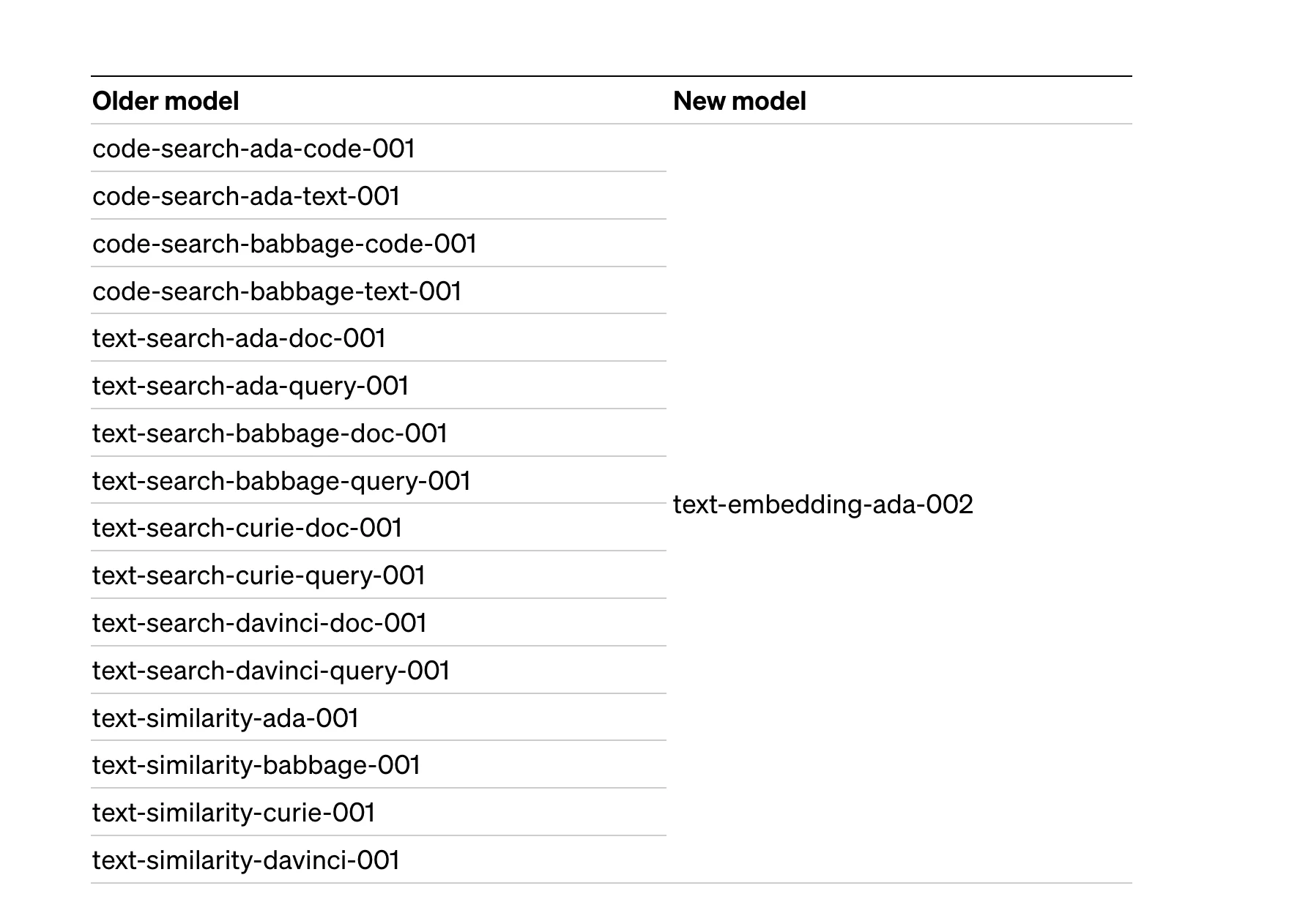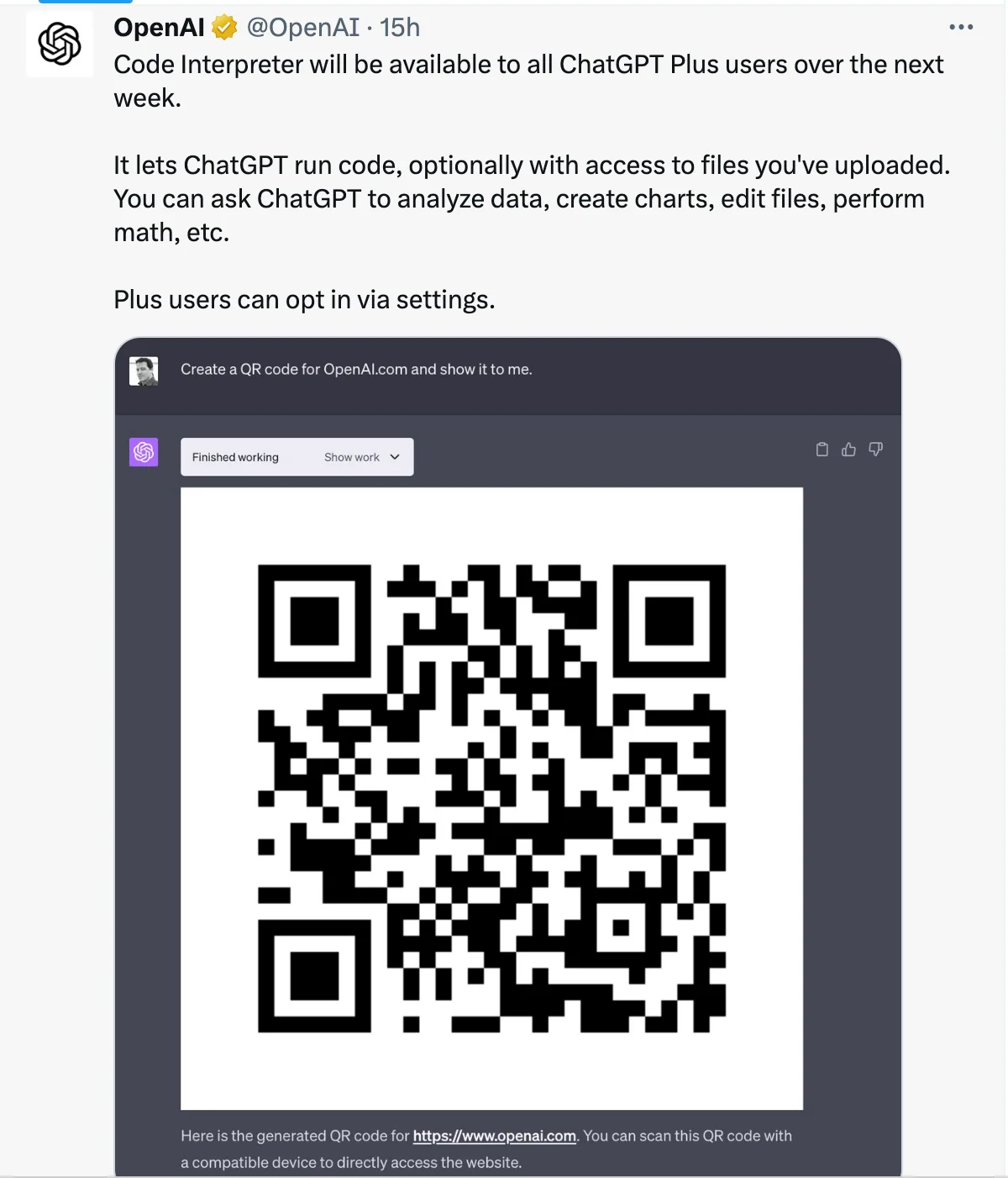Key Takeaways of OpenAI’s Announcement on July 6, 2023:
GPT-4 API is now generally available for use.
Some older models in the Completions API are set to be deprecated at the beginning of 2024.
GPT-3.5 Turbo, DALL·E, and Whisper APIs have also reached general availability.
GPT-4 API General Availability
We're thrilled to share the latest update from OpenAI: the GPT-4 API is now available to all paid API customers! This means that developers with a payment history can now tap into the power of GPT-4, harnessing its capabilities with a context of 8K tokens.
Moreover, OpenAI has plans to open access to new developers by the end of this month. Once the doors are open, rate limits will gradually increase based on computing resources, ensuring a smooth experience for all.
But that's not all! OpenAI has also introduced a lineup of other exciting APIs, including GPT-3.5 Turbo, DALL E, and Whisper. Furthermore, you can look forward to fine-tuned versions of the reliable GPT-4 and GPT-3.5 Turbo later this year.
Since its launch in March, the GPT-4 model has skyrocketed in popularity. Developers from around the globe have eagerly requested access to the model's API, and the range of innovative products leveraging GPT-4 continues to grow remarkably. And now, with the model fully open, developers worldwide can leverage the immense power of GPT-4 to enhance existing applications or dive into the realm of generative AI.

About GPT-4
GPT-4, the fourth iteration of OpenAI's Generative Pretrained Transformer series, is a groundbreaking language model that has taken the world of artificial intelligence by storm. Building on the foundation laid by its predecessors, GPT-4 has made significant strides in natural language processing, pushing the boundaries of what AI can understand and generate.
One of the most notable advantages of GPT-4 is its enhanced creativity. The model can generate highly creative and coherent text, making it a valuable tool in multiple fields. You can use it for text generation, problem-solving, and brainstorming ideas, making GPT-4 a versatile tool.
Another promising feature of GPT-4 is its potential for visual input processing. Although this feature is not yet open, it represents a significant step forward in integrating visual and textual data, opening up new possibilities for AI applications.
GPT-4 also excels in processing longer contexts. With this ability, you can get more complex and nuanced responses. GPT-4 is, therefore, more effective in tasks that require deep knowledge of the context, such as dialogue systems or long-form content generation.
However, like any technology, GPT-4 has its drawbacks. It can sometimes generate incorrect or nonsensical responses, also known as "hallucinating." The OpenAI team has been working on this, but it has not been completely resolved at this time.
Nevertheless, developers worldwide have already harnessed the power of GPT-4 to achieve remarkable results. Morgan Stanley leverages GPT-4 to organize its vast knowledge base, while Be My Eyes transforms visual accessibility with the help of this technology. Duolingo benefits from the deepened conversation facilitated by GPT-4, and Stripe relies on it to streamline the user experience and combat fraud. Even the Government of Iceland utilizes GPT-4 to preserve its language heritage.
The use cases of GPT-4 continue to expand, and its potential is truly awe-inspiring. From generating intricate novels with convoluted plotlines to delivering accurate stock market predictions, GPT-4 empowers developers across various industries. It revolutionizes dialogue generation, facilitates language translation, aids in medical diagnosis, streamlines legal document generation, and even drives scientific innovation.
With the general availability of GPT-4 API, more developers have the opportunity to unlock the immense potential of this AI language model.
New Models for the Chat Completion API
OpenAI also gave a sneak peek into developing new models for the Chat Completions API, sharing that they are working on fixing the remaining gaps in the Chat Completions API. This includes providing log probabilities for completion tokens and enhancing steerability to make responses less "chatty."
Chat Completions was launched in March and has already gained significant popularity among API developers. It can handle most previous use cases and accommodate new conversational requirements, offering high flexibility. The Chat Completions API's structured interface and multi-turn conversation capabilities allow developers to create conversational experiences and perform extensive completion tasks, all while minimizing the risk of prompt injection attacks. What will the new models look like? That's something to anticipate eagerly.
Deprecation of the Completions API
OpenAI announced that it will use the new model to replace some old ones of the Completions API on January 4, 2024. This model update involves embeddings models, Completions API, and Edits API, including the davinci models developers are most familiar with (see the figure below for specific models). While the API for these models will still be accessible, they will be marked as "legacy" in the developer documentation.


Key Takeaway for Developers Using GPT-4 API:
Applications using the stable model names for base GPT-3 models (ada, babbage, curie, davinci) will automatically be upgraded to the new models listed above on January 4, 2024.
Developers using other older completion models (such as text-davinci-003) will need to manually upgrade their integration by January 4, 2024 by specifying gpt-3.5-turbo-instruct in the “model” parameter of their API requests.
Developers wishing to continue using their fine-tuned models beyond January 4, 2024 will need to fine-tune replacements atop the new base GPT-3 models (ada-002, babbage-002, curie-002, davinci-002) or newer models (gpt-3.5-turbo, gpt-4).
It's important to note that this change will impact developers who use the API, and migrating a model that has been fine-tuned on your own data can be challenging. To address this, OpenAI has stated that it will help users who have previously fine-tuned models to make the transition as smooth as possible.
Code Interpreter
In addition, OpenAI has also announced on Twitter that they will provide Code Interpreter to all ChatGPT Plus users starting next week. This feature enables ChatGPT to run code and access uploaded files. Additionally, it can handle various tasks such as data analysis, graph creation, file editing, and mathematical operations. OpenAI President Greg Brockman has shared his use case for this feature.

Code Interpreter is an intriguing addition to existing plugins and web searches. OpenAI mentions that users can opt-in to this feature via their Settings, so remember to check your settings menu in a week to see what's new!
The Bottom Line
As we usher in the era of GPT-4 API, we open the doors to limitless possibilities. This monumental advancement in AI language generation unlocks unprecedented creative potential. Stay tuned to Gate2AI for all the latest developments in the exciting world of artificial intelligence!